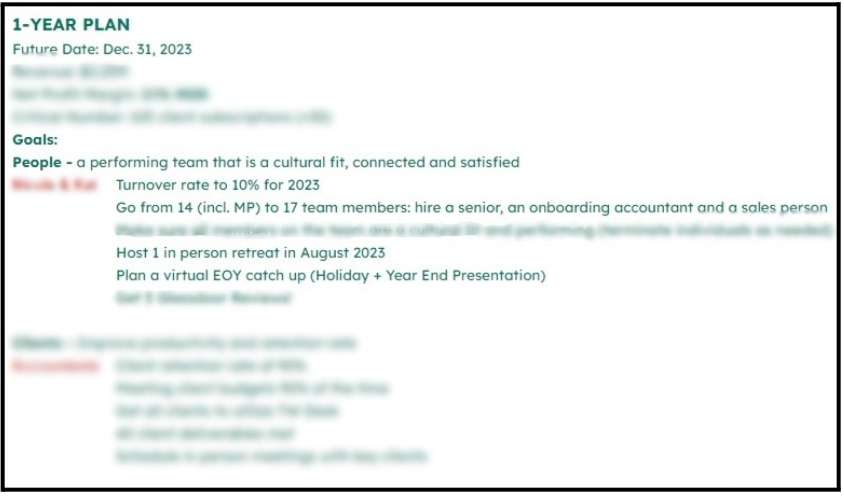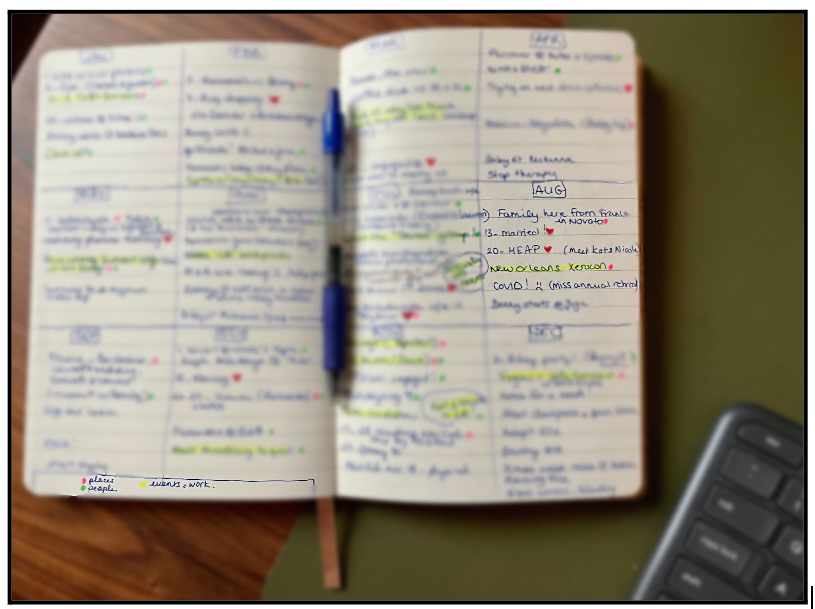Three Tools To Help Small Business Owners Manage Strategy Planning and Goals Setting For The Year Ahead
Business owners often put a lot of pressure on themselves to succeed. But with the right strategy planning tools, they can achieve their goals and reach new heights.
The beginning of a new year is usually filled with hopefulness and optimism. It’s a time to set new goals, create plans, and focus on the future. But how do you go about strategy planning for the year ahead? Here are three tools I use to ensure my business and personal life are ready for success.
Tool 1: Define Business Strategy in the Fall: 3-Year Plan, 1 Year SMART Goals, strategic actions
The strategy planning process doesn’t start on December 31st—it starts in the fall. By this point in the year, you should have a good idea of what your company has accomplished and what you still need to work on. Take some time to review your performance, reflect on the past year, and think about where you want your business to be in three years.
Of course, this process is more straightforward if you have a strategic plan in the first place. What do you want your company to look like? What do you want it to be known for? Regarding team members, what kind of people do you want working with you? Answering these questions will give you clarity as you move forward.
How to setup a strategic plan: As a small business owner myself, I try to keep it simple. I list 20 bullet points and a due date (December 31, 20XX – 3 years from now). For example, our list currently includes the following:
20 people on the team
We promote internally
We have a system to track client satisfaction and be proactive
Etc.
I review and update our three-year goals each fall.
Once you have your long-term vision laid out, identify what your 12-month goals should be. We sort our goals into five categories: people, clients, processes, marketing, and financial. This year, under people, our action items include:
Hiring an onboarding and sales specialist, and a staff accountant
Host 1 in-person retreat in August 2023
Maintain employee turnover at 10%
Etc.
Finally, identify what is doable in the first quarter of the year. Goals must be SMART (specific, measurable, attainable, realistic, and timely). This quarter, our people goals are to:
Rollout new benefits discussed at the retreat
Post a job offer for a salesperson and an onboarding specialist
Book our annual retreat accommodation and make reservations for key activities
Defining bite-size goals makes it also easier to delegate tasks to team members. For instance, as the main salesperson today, I am in charge of writing the job description for the salesperson. Our COO handles culture and HR. She is in charge of rolling out benefits and planning the retreat.
Finally, we define three SMART annual goals for each employee. Employees can measure their ongoing performance and ensure their work results in our company achieving our overall one-year targets.
Tool 2: Set Up Personal Goals During the Holidays
Once the holidays roll around, it’s time for me to get organized and start planning my personal life. I like to get started by making a list of up to 20 goals I want to accomplish over the course of the year in a new notebook (one for each year) — and then highlighting five that are particularly important. This helps me focus on what matters most while also keeping an eye out for other opportunities that come my way during the year.
HOW TO: This year, one of my top five is to nurture my body and health. I write out 2-3 action items for each goal. So I am committing to working out four times a week (barre classes, yoga, pilates - the more specific, the better -), ending my work day with a 5-minute stretch or meditation to relax before transitioning back to family life, and eating healthy meals at least five days a week.
My goals range from health, friendships, and puppy care to personal finance, networking, and more. I only share my goals with anyone impacted by them like my spouse, our C-suite executive, or a friend. It helps me stay accountable. I keep my notebook on my desk and re-read the goals periodically to stay focused and motivated.
Tool 3: Reflect at Year-End
At the end of the year (or even earlier if needed), take some time out of your day to look back at all that has happened throughout the year—the successes and any barriers or obstacles that may have come up along the way.
Ask yourself questions like “What did I learn?” “What could I have done better?” “What went right?” and “What didn’t go according to plan?” From there, decide which key themes or topics will guide your strategy in the new year; make a note of any changes or adjustments; and determine which processes should be started up again, stopped altogether, or continued moving forward into next year.
Here’s how I do it: I use the last few pages of my notebook and draw 12 boxes (1 for each month). In each box, I write key events, places, people, achievements, and ideas I had. It’s a great exercise to do with your spouse and/or friends. We share the trends we noticed, essential themes, and personal reflections.
Most years, I also take time to re-read my notebook and list out what I want to start, stop, and continue doing next year. The more I learn about myself, the better I am as a leader, spouse, and friend.
Strategy planning is an important part of helping business owners stay organized and focused throughout their journey to achieving success. It’s essential to have a plan in place that outlines your vision, key strategies, and results before diving into each new year so you can adequately measure progress over time! With these three tools listed above, you can create a process that works best for you to reach your 2023 goals!
And if you are buried in administrative tasks, feel free to reach out to us. We help free business owners’s time by standardizing and taking over bookkeeping tasks.



